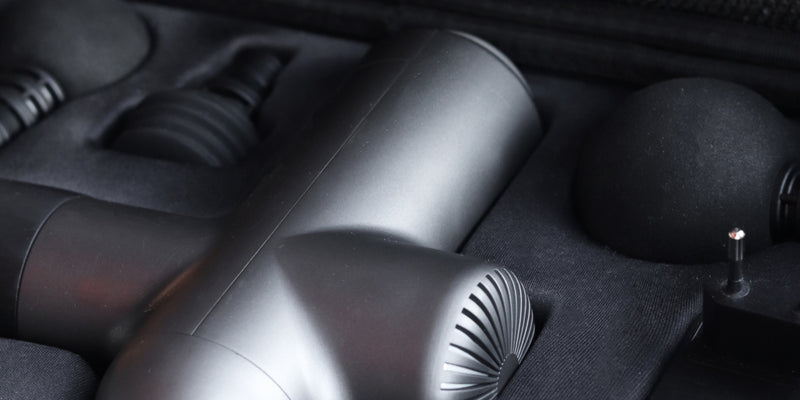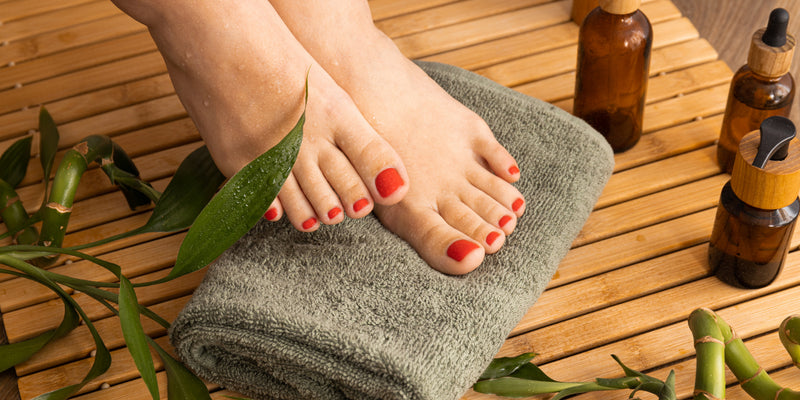In our fast-paced and demanding lives, stress has become an all-too-familiar companion. It affects our physical and mental well-being, leaving us drained and disconnected from our inner peace. Thankfully, there are various techniques and therapies available to help us combat stress and find solace in relaxation. One such technique gaining increasing popularity is compression massage.
Compression massage goes beyond traditional massage practices by incorporating the use of compression garments or specialized tools that apply pressure to specific areas of the body. This targeted compression aids in releasing tension, improving blood circulation, and promoting deep relaxation.
The therapeutic benefits of compression massage are numerous and far-reaching. Not only does it offer immediate relief from muscle soreness and tension, but it also enhances the overall well-being of the body and mind. By stimulating blood flow and lymphatic drainage, compression massage facilitates the removal of toxins and metabolic waste, promoting a sense of rejuvenation and revitalization.
Moreover, compression massage has been found to have a profound impact on stress reduction. The gentle pressure exerted during the massage triggers the release of endorphins - the body's natural feel-good chemicals. These endorphins help to alleviate anxiety, elevate mood, and induce a state of deep relaxation. In a world where chronic stress has become the norm, the therapeutic benefits of compression massage offer a much-needed respite.
Throughout this blog post, we will explore the scientific evidence supporting compression massage, examine different techniques and tools used in this therapy, and provide practical tips for incorporating compression massage into your self-care routine. So, join us as we unlock the secrets of stress relief and relaxation through the transformative power of compression massage. Get ready to embark on a journey of wellness and discover the therapeutic benefits that await you.
What Is Compression Massage?

Compression massage is a therapeutic technique that involves applying pressure to specific areas of the body using various methods such as hands, fingers, elbows, or tools. This type of massage focuses on compressing the muscles, tissues, and joints to promote relaxation, increase blood flow, and alleviate pain and tension.
Compression massage can be applied to different parts of the body, targeting specific problem areas or providing overall relaxation. It is often used in conjunction with other massage techniques to enhance the overall experience and effectiveness of the treatment. This form of massage therapy is based on the belief that applying pressure can help release built-up tension, improve circulation, and encourage the body's natural healing process. With its ability to relieve muscle pain and reduce stress, compression massage has become a popular choice for individuals seeking a holistic approach to relaxation and wellness. Whether used as a standalone treatment or combined with other modalities, compression massage offers numerous benefits for both physical and mental well-being.
Types of Compression Massage
Compression massage therapies offer numerous benefits, including increased blood circulation, reduced muscle tension and soreness, improved flexibility, enhanced relaxation, and stress relief. These techniques work on a deeper level, targeting specific areas of the body to promote physical and mental well-being.
- Swedish Massage: Typically known as a relaxation massage, Swedish massage incorporates a series of long, flowing strokes, applied with varying pressure. The therapist uses a combination of kneading, tapping, and rolling techniques to enhance blood circulation, reduce muscle tension, and promote overall relaxation.
- Deep Tissue Massage: This type of massage therapy targets the deeper layers of muscles and connective tissues. The therapist applies prolonged, intense pressure using their hands, elbows, or forearms to relieve chronic pain, release muscle knots, and alleviate muscle restrictions. It can also aid in improving posture and flexibility.
- Sports Massage: Primarily designed for athletes and active individuals, sports massage involves deep compression and stretching techniques to promote better athletic performance, prevent injuries, and enhance muscle recovery. It focuses on specific muscles or muscle groups used during sport activities, increasing range of motion and flexibility.
- Shiatsu Massage: Originating from Japanese traditional medicine, Shiatsu massage applies rhythmic finger pressure on specific acupuncture points along the body's energy lines. The therapist uses palms, fingers, and thumbs to perform a series of compressions to restore balance and harmony, relieve stress, and alleviate physical discomfort.
- Thai Massage: Developed in Thailand, Thai massage blends compression techniques, stretching, and yoga-like poses. The therapist applies rhythmic pressure using their hands, elbows, knees, and feet to target the body's energy lines and release tension. It improves flexibility, relieves muscle and joint pain, and enhances energy flow.
What Makes Compression Massage Different from Other Massage Techniques?

Compression massage is a massage technique that sets itself apart from other types of massages through its unique focus on applying pressure into the muscle tissues using petrissage movements. Petrissage refers to kneading, rolling, and squeezing the muscles, creating a deep and targeted release of tension.
What distinguishes compression massage from other techniques is its emphasis on the pressure applied. In compression massage, the therapist uses their hands, fingers, or elbows to firmly press into the muscle tissues, targeting specific areas of tension or discomfort. This deep pressure stimulates blood flow, increases circulation, and promotes healing in the muscles.
Unlike other massage techniques which may prioritize long, flowing strokes or gentle rubbing, compression massage offers a more intense and concentrated experience. By applying constant pressure to the targeted muscle groups, compression massage effectively breaks up knots, adhesions, and scar tissue, releasing built-up tension and promoting muscle recovery.
The benefits of compression massage surpass those of other massage techniques. By targeting deep layers of muscle tissue and applying firm pressure, compression massage can alleviate chronic pain, reduce muscle stiffness and soreness, and improve mobility. The intense pressure promotes the release of endorphins, providing natural pain relief and enhancing relaxation. Additionally, compression massage can improve circulation and lymphatic drainage, aiding in the removal of toxins and waste products from the body.
What Are the Benefits of Compression Massage?

Compression massage, also known as compression therapy or pneumatic compression, involves the use of air pressure to apply pressure to specific body parts or muscles. This type of massage has several benefits for the body, including reduced swelling and inflammation, faster muscle recovery, prevention of delayed-onset muscle soreness, muscle pain relief, and improved sports performance.
One of the primary benefits of compression massage is its ability to reduce swelling and inflammation. The pressure applied to the affected area helps to improve circulation, which in turn reduces swelling and inflammation. This can be particularly beneficial for individuals who have recently experienced an injury or undergone surgery.
In addition to reducing swelling and inflammation, compression massage also promotes faster muscle recovery. The pressure applied during the massage helps to increase blood flow and oxygen delivery to the muscles, which aids in the removal of waste products and promotes the healing process. This allows muscles to recover more quickly after strenuous exercise or physical activity.
Another benefit of compression massage is its ability to prevent delayed-onset muscle soreness (DOMS). DOMS is a common condition that occurs 24-48 hours after intense exercise and is characterized by muscle pain and stiffness. By promoting blood flow and reducing inflammation, compression massage can help prevent the onset of DOMS and minimize post-workout muscle soreness.
Furthermore, compression massage provides effective muscle pain relief. The pressure applied to the muscles helps to stimulate the release of endorphins, which are natural pain relievers produced by the body. This can provide immediate relief for muscle aches and pains, making compression massage an ideal treatment for individuals experiencing muscle discomfort.
Lastly, compression massage has been shown to improve sports performance. By increasing blood flow, oxygen delivery, and nutrient supply to the muscles, compression massage enhances muscle function and performance. This can lead to improved athletic performance, increased endurance, and reduced risk of injury.
Can Compression Massage Reduce Stress?

Compression massage is a highly effective technique that can significantly reduce stress levels and alleviate tension throughout the body. This type of massage involves the application of gentle pressure, typically with the use of the hands, on specific areas of the body to promote relaxation and improve overall well-being.
One of the main benefits of compression massage is its ability to increase blood flow. The pressure exerted during the massage helps to stimulate the circulatory system, allowing oxygen and nutrients to reach the muscles more efficiently. Improved blood flow enhances the body's ability to heal itself and helps reduce muscle tension and promote relaxation.
Furthermore, compression massage works by targeting specific muscle groups and applying gentle pressure to release any built-up tension. This technique helps to relieve tightness and knots in the muscles, which are often a result of stress. By reducing muscle tension, compression massage can significantly decrease stress levels and promote an overall sense of well-being.
Takeaway
Compression massage is a technique that involves applying pressure to specific areas of the body using compression garments or specialized tools. It goes beyond traditional massage practices and offers numerous therapeutic benefits. By releasing tension, improving blood circulation, and promoting deep relaxation, compression massage provides immediate relief from muscle soreness and tension. It also enhances overall well-being by stimulating blood flow and lymphatic drainage, facilitating the removal of toxins and promoting rejuvenation. Moreover, compression massage has a profound impact on stress reduction by triggering the release of endorphins, which alleviate anxiety, elevate mood, and induce deep relaxation. Incorporating compression massage into one's self-care routine can lead to improved physical and mental well-being.
Compression massage stands out from other massage techniques by its emphasis on applying deep pressure to targeted muscle groups. This intense pressure breaks up knots, adhesions, and scar tissue, promoting muscle recovery and relieving chronic pain and stiffness. It also improves circulation and lymphatic drainage, aiding in the removal of toxins and waste products from the body. Compression massage offers a more concentrated and intense experience compared to other techniques, making it effective for reducing muscle tension, alleviating stress, and promoting relaxation. The benefits of compression massage extend to reducing swelling and inflammation, promoting faster muscle recovery, preventing delayed-onset muscle soreness, providing muscle pain relief, and enhancing sports performance.
Renpho Health Tips
-

Massage Gun Heads 101: Everything You Need to Know
May 13, 2024
Read more >
-

The ABCs of Foot Hygiene: Tips for Healthy and Happy Feet
May 7, 2024
Read more >
-

Stress Buster: The Healing Touch of Reflexology
May 6, 2024
Read more >
-

How to Use a Massage Gun for Shoulder Pain Relief
May 2, 2024
Read more >
-

Massage Guns for Knee Pain: 5 Effective Techniques and Best Practices
April 24, 2024
Read more >

